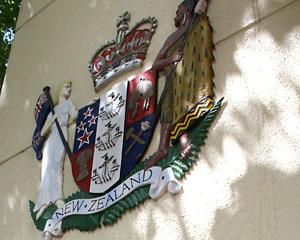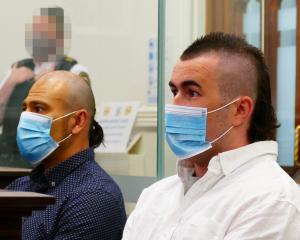Forensic scientists reproduced shoeprints left at the driveway where Scott Guy was gunned down to pinpoint the type of dive boots worn by his killer, a court has been told.
The distinctive wavy footwear impressions at the scene have been the focus of Ewen Macdonald's murder trial in the High Court at Wellington for a second day.
Macdonald, 32, has denied shooting dead his brother-in-law Mr Guy, 31, in the pre-dawn darkness of July 8, 2010 after growing tensions over the family farm they co-managed.
The Crown says Macdonald wore dive boots with a distinctive wavy pattern when he allegedly ambushed Mr Guy at the bottom of his driveway as Mr Guy left to do the morning milking.
Macdonald is alleged to have bought a pair of size nine Proline dive boots from his father's Palmerston North store, Hunting and Fishing, and disposed of them after the murder.
The boots have never been found.
ESR forensic scientist David Neale told the court yesterday he found "numerous occurrences" of footwear impressions with a wavy pattern close to Mr Guy's body and ute.
Returning to give evidence today, Mr Neale said all the impressions at the scene had come from the same shoe.
Mr Neale said the distance between the peaks and troughs of the wavy pattern was consistent, at 8mm, with 5.5mm between each line of wavy patterns.
The footwear had a protruding rectangular label, about 13mm by 22mm across, which was in a clear band in the mid-foot area of the impression.
The thickness of the sole was evident and the shoes had an "edging strip" with multiple diamond patterns.
Mr Neale asked international agencies to search for similar impressions but the shoes matched none of those in their databases.
The impressions were found to be consistent with dive boots, but it was not common for dive boots to be included on footwear databases.
Mr Neale looked at one brand of dive boot, the Aqua Pro, but the wavelength and the label on the sole were not consistent with the impressions taken from the scene.
Police submitted examples of a second dive boot design - the Proline W375 neoprene dive boot - for Mr Neale to examine.
He said all of the identified features were present in the right configuration in the Proline boots.
Mr Neale said he made soil impressions with new and used example boots, and cast the impressions to replicate those at the crime scene.
He said the new boots made impressions that were "very sharp" but the casts from used boots showed signs of wear.
Mr Neale said the casts taken from the crime scene were similar to those made by the used boots because they showed signs of wear.
In one worn boot, he said the wavy-lined pattern looked as if it had been "squashed" and the label was quite damaged.
In another very worn boot, the wavy lines had merged together and the label was badly damaged.
Mr Neale said the casts taken from the scene had similar flattening of the wavy line.
"That suggests to me that the impressions from the scene were more like the worn Proline dive boots than the new Proline dive boots."
Mr Neale concluded the footwear worn at the scene was a Proline dive boot or a design that closely resembled it.
From measurements of the impressions, he ruled out size seven and 11 boots - while sizes eight, nine and 10 were within the range.
Based on the casts, he concluded the shoes worn at the scene were size nine or 10.
His evidence is continuing.
The trial yesterday heard evidence on the police's extensive search to determine the type of footwear the killer wore.
Detective Laurie Howell said officers visited dozens of stores throughout the lower North Island and searched international databases containing hundreds of thousands of shoe impressions, but no matches were found.
The breakthrough came when Proline brand dive boots were found to be a match almost a year after Mr Guy was murdered.











